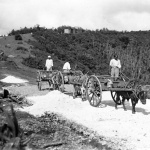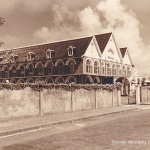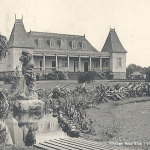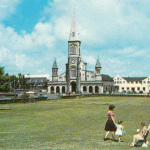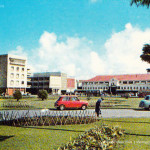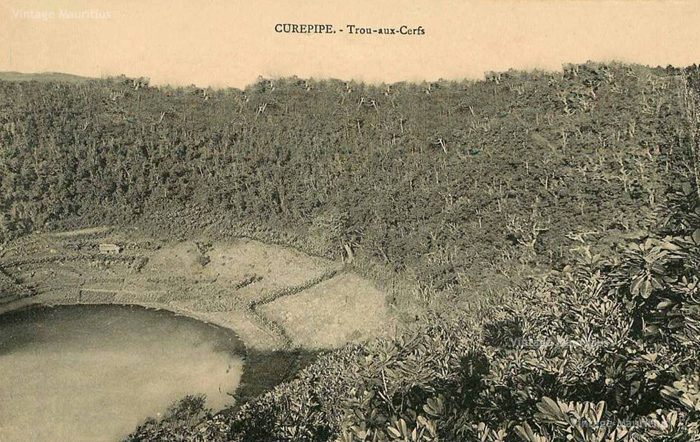
Curepipe Trou aux Cerfs 1890s
Trou aux Cerfs (also known as Murr’s Volcano) is a dormant volcano with a well-defined cone and crater. It is 605 m (1,985 ft) high and located in Curepipe, Mauritius. The crater has been alternately described as 300 and 350 meters in diameter, and is 80 meters deep.
According to experts, the volcano is lying dormant but could become active at any time within the next thousand years. The crater is only accessible down a steep embankment which is considered dangerous. Water and silt have clogged the crater, making it even less accessible.
During the years 1860s to 1890s, according to the book of Charles Giblot Ducray entitled ‘Curepipe’, the Trou aux Cerfs area was a highly desirable place for settlement for its very cool climate. At that time, the area was still covered in very thick forest and very few roads existed. But its outer slopes were highly prized lands possessed by some rich families only. The oldest dwellings, after those of Laperouse, were for the ‘La Hausse de la Louvieres’ family who possessed a major part of the slopes of the volcano where they constructed the ‘Belvédère’, house where Sir Virgile Naz spent his recreational times.
Additionally, during the times of the Botanist Hector Lavignac, he used the inner slopes and areas of the crater for agricultural research and modernisation and also attempted to breed birds from Europe. In the picture we can notice the small house down the crater and lands of cultivation where the latter stayed and did experimental works for the improvement of the local sugarcane and also introduced the ‘Moineau’ (Sparrow) bird from Paris. He chose this inner place because of the exceptional climate that prevailed and facilitated a lot of his researches. It is known that his successful works in the improvement of the sugarcanes helped reboost the economy of the time which started to face some difficulties.
